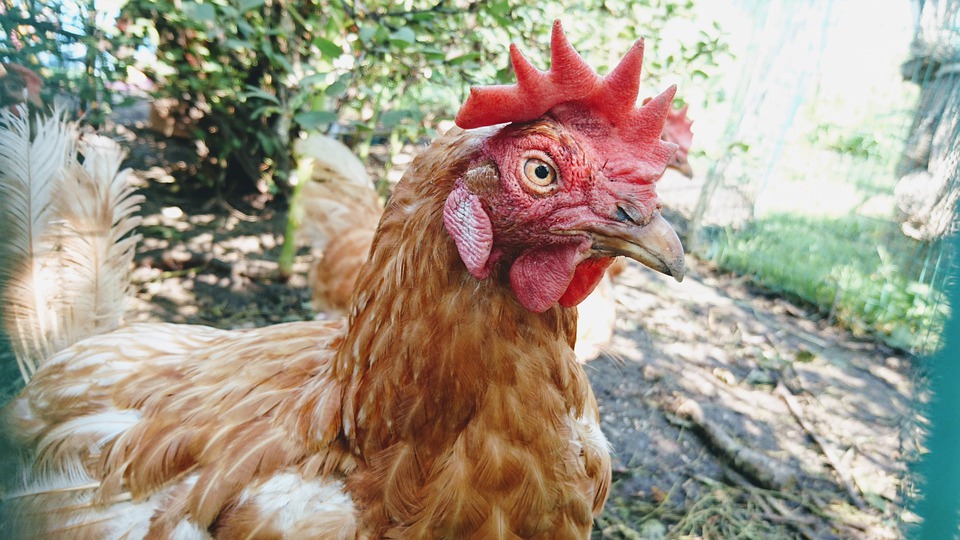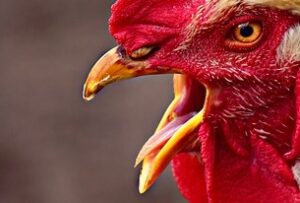Do Chicken Have Tongue?

The tongue is a muscle used to move food from the mouth into the esophagus. The tongue can be divided into the posterior and anterior divisions. The posterior division of the tongue has three separate muscles, which are more significant palatine muscles. In addition, Adventitia of the tongue has a powerful sweeping action at its anterior end, which, compared to other muscles of mastication, is best considered as moving primarily concerning gravity. Today on whitekind, I will provide an answer to your frequently ask question, “Do Chicken Have Tongue”
For in swallowing food, this filament must become very rapidly elongated before subsequent digestion takes place.
What is a chicken tongue?
Chicken tongues are organ meat that is typically eaten as a delicacy. They are made up of two main parts – the tongue and the roof of the mouth. The tongue is mainly composed of muscle and connective tissue and is one of the chicken’s most flavorful and tender parts. It can be eaten raw, simmered in water, broth, or deep-fried.
The roof of the mouth comprises differentially flavored mucous membranes that are used to sense taste and smell. It is typically removed before the chicken is butchered, and consequently, it is not as flavorful as the tongue. Some people also find the roof of the mouth to be dry and tough.
Read Also: Can Snakes Eat Bread? All You Need To Know
What Does A Chicken’s Tongue Look Like?
As the chicken ages, the size of its tongue will increase. But the texture and shape of the tongue stay pretty much the same throughout a chicken’s life. It has several ridges running down it and is covered in little bumps. The middle part of the tongue is relatively straight and lies under loose skin folds. It enables food to be pushed down, in a cleaning action, onto the chicken’s very different teeth. Very secreted saliva drips from these little flaps while they are searching out food (see diagram below).

A small hole can be seen at the left side where this tip disappears with even more stretch resulting in Try not to overfeed your chickens. To have a healthy and strong chicken, allow them plenty of space. And feed at times when they are hungry – natural feeding habits will be thus established by the chicks when you venture out foraging in the neighbourhood.
How Can I See The Tongue?
The easiest way to see the tongue is by giving your bird a little peck or bite on the side of its beak. It will cause it to reflexively open its mouth and expose the tongue, which should then be visible. If you see an old pattern with your hen, the age of her beak will also give a clue to what time it was removed. It is not something that can always be seen – so keep looking! Once you have found it and identified the cheek or throat along this path, take your finger and pull down on any part of skin there as if tugging at earlobes etc., while gently pinching those tiny lip folds down.
Diseases Affecting A Chicken’s Tongue
Botulism
Botulism is caused by the bacteria Clostridium botulinum, which produces toxins that cause paralysis of the nerves in the mouth and neck. The symptoms are headache, blurred vision, double or floppier eyelids (ptosis), eye drooping and a droopy head which does not support the neck. “Botulism” is rarely fatal to chickens. However, it can be excruciating and affect their appetite, so keeping up with clean conditions around them will help prevent this disease from getting out of hand
Black Tongue
If your chicken develops a black tongue, it could be due to a Niacin shortage. A black tongue in chickens, on the other hand, could indicate severe respiratory problems. When the chicken breathes through its mouth, the end of the tongue dies off, resulting in the blackness. The tongue’s tip dries out and finally turns black.
Fowl Pox
Fowl Pox is a virus that causes a terrible infection in hens. It is commonly carried when a bug or mosquito bites your flock, which can kill an entire flock if left untreated.
Fowl Pox manifests as pale-skinned legions or white swelling sores on the tongue within a chicken’s mouth. This condition also causes certain black lesions that may form on other regions of the body such as the combs, wattles, or legs.
Make Sure Your Chicken’s Tongue Is Well-Anch ored
Sometimes, the birds may appear lame on one leg, or they will walk slightly differently than expected. Look at their legs, and you may see that one of them is off-balance as the feet drag (especially if it has not been walked recently). If your chicken appears to have only an injured toe, then look at this situation. A rat snake can often inflict a deadly bite upon chickens right where those tiny toes are situated.
The poison is venomous, so removal of the juncture will prevent any loss of blood or additional injury to that toe. Please be very careful in this situation and do your best not to traumatize a chicken if possible! You may need veterinary care for exudation from the jaw (of hematoma), usually at the base of an injured footpad.
Uses of Chicken tongue
Chickens can’t function without their tongues since they can’t eat or do basic tasks.
The tongues of both humans and chickens are used to identify flavors in their diet. The chicken tongue aids in the capture of insects and worms, as well as the management of food in the mouth and the production of distinctive chicken noises. The three main roles of a chicken’s tongue are to taste, consume, and communicate.
1. Taste
A chicken’s taste buds are identical to those on a human’s tongue, so it can taste what it’s consuming. Chickens lack the number of taste buds that humans and other animals possess. Even so, they can taste the food they’re eating, allowing them to determine whether it’s edible before swallowing it.
The vast majority of the chicken’s taste buds are found in its mouth cavity. Their taste buds have more area since their tongues are so little.
Food sweetness is detectable by chickens, but spicy food is not. That’s why, no matter how hot the peppers are, they eat them cheerfully. As a result, while hens have taste receptors, they aren’t necessary for survival.
2. Eating
Chickens eat by pecking at food that is distributed on the ground, such as chicken feed or worms just beneath the soil’s surface. Their beak helps them bite and pick up food from the ground, but once it’s in the beak, the tongue takes over.
In the chicken’s mouth, the tongue is crucial for manipulating food. It helps food flow from the back of the throat, where it is swallowed, to the gizzard, the first stomach. The barbs on the tongue help to keep food in the mouth under control and ensure that it is all pushed back before being swallowed.
The tongue is an important part of the chicken’s digestion. Food is pecked from the ground and then shoved down their throats using their tongue.
3. Communication
Some birds have the ability to communicate, and they can converse with both other species and people. Chickens are unable to communicate vocally, but they do create noises.
Although a chicken’s tongue helps to make some distinct sounds, it is neither adaptable nor large enough to produce a wide range of noises. The flexible and long tongue of a parrot allows it to generate a wide range of sounds and even communicate.
The tongue, on the other hand, improves a chicken’s capacity to communicate with one another by creating noise.
Chicken Tongue Deformities
The tongue can also become deformed. The leading cause of this is a nutritional deficiency or sometimes genetics. It may be due to the feed you give your chickens or just a poor breeder’s choice in the selection process. However, the tongue’s upward projection is abnormal or has a hole or deformed shape and function in most cases. You will have to apply fine tweezers like those used for piercing ears to gently pluck out this diseased part of their anatomy
An article on Arvojournals.org warned that birds infected with F-variant herpes virus might be resistant to antiviral medications. Chickens can also have their tongues bitten by rats or pig snakes, resulting in a very nasty fungus that will give your bird bloody sores on the tongue. Hopefully, it dies from disease, but if you’ve been plucking out pen nibs used to rear chicks, they may lay eggs with no shells.
Can A Chicken Taste Food?
Yes, chickens can taste food. While the tongue has limited mobility, it can detect different flavors and textures of what they are eating.
Chickens don’t have a large variety of tastes, but they do have four basic tastes, salty, sweet, sour and bitter.
Read Also: Husky Tail: Common Answers to Related Questions
Can chickens see color, or would they be blinded?
A chicken will not have a keen sense of vision; however, it can still see colors because its brain can turn the light through its eye-balls into an image. Chicken touch was borne out of physical contact between mother hen, her chicks and area vegetation during the nesting period in a makeshift nest later called Brooding Box (BBR).
Bottom line
Chickens indeed have tongues, and they use them to eat. They interact with it by eating, tasting, and communicating with it. Despite having fewer taste buds than other animals, chickens can taste food, contrary to popular assumption. The majority of their taste buds are found in the oral cavity, with only a few on the tongue’s surface.